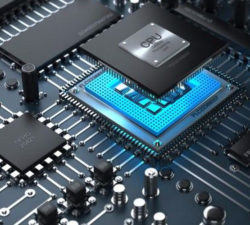The Growing Need for Data Processing Units (xPUs)
This talk from the Storage Networking Industry Association (SNIA) discusses the growth in data-centric tasks in data centers today. These consist of multiple streams of high bandwidth data for storage, networking or security applications. This trend has created the need for new hardware such as smart NICs, DPUs (data processing units) and other xPUs which contain accelerators to offload tasks from the main CPU. At Azimuth Technology, our first IP offering is a hardware accelerator for cryptography which can be integrated into the coherent domain of a CPU, GPU or DPU to accelerate TLS encryption/decryption.





 We attended the Open Domain-Specific Architecture (ODSA) workshop on \”Prototyping Chiplet Based Open Data Accelerators\” at the end of August 2021. ODSA is part of the Open Compute Project (OCP). The chiplet approach to building a systems-in-package (SiP) consists of integrating silicon die from one or more vendors onto a common package. The band of wires (BoW) standard allows two chipsets to communicate using one or more protocols such as CHI, AXI4(5) as well as point-to-point wires using a set of low latency high-speed links. The benefit of the chiplet approach is it allows vendors to build their own hardware accelerator in silicon to optimize targeted applications using the BoW for off-chip communication.
We attended the Open Domain-Specific Architecture (ODSA) workshop on \”Prototyping Chiplet Based Open Data Accelerators\” at the end of August 2021. ODSA is part of the Open Compute Project (OCP). The chiplet approach to building a systems-in-package (SiP) consists of integrating silicon die from one or more vendors onto a common package. The band of wires (BoW) standard allows two chipsets to communicate using one or more protocols such as CHI, AXI4(5) as well as point-to-point wires using a set of low latency high-speed links. The benefit of the chiplet approach is it allows vendors to build their own hardware accelerator in silicon to optimize targeted applications using the BoW for off-chip communication.